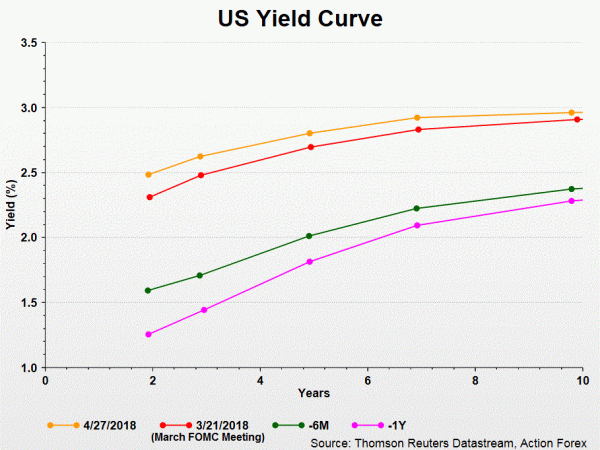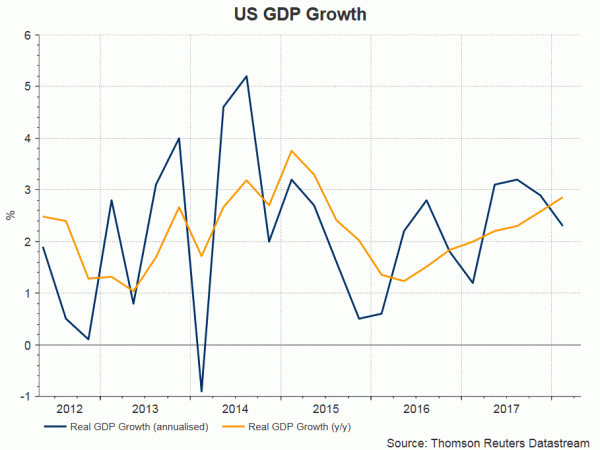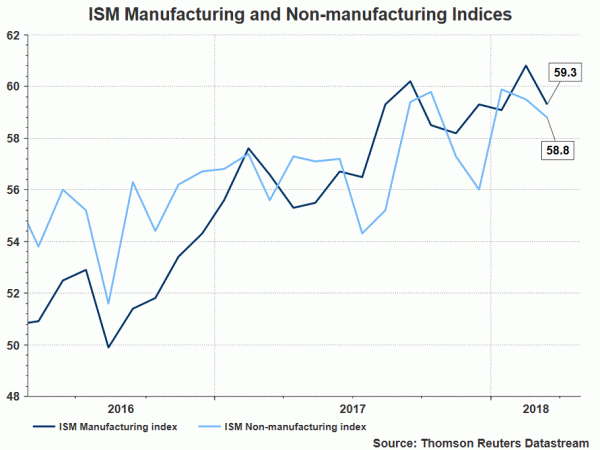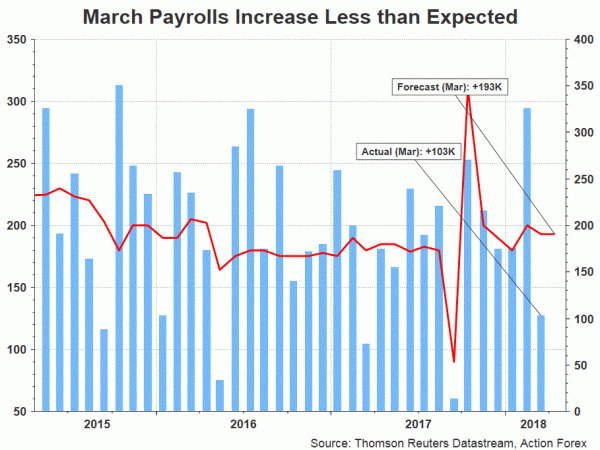There have been both positive and negative data released since the March FOMC meeting. We expect policymakers to view slowdown in GDP growth as driven by temporary factors which should not affect the monetary policy outlook. Meanwhile, the central bank would likely acknowledge recent pickup in core inflation and wage growth, hailing them as reasons supporting further gradual rate hike: The median dot plot suggested three rate hikes this year while the market has increasingly priced in four. We expect the Fed to leave the policy rate unchanged at 1.50-1.75% at the May meeting, leaving the rate hike (+25 bps) for June, when the updated staff projections would also be published.
Real GDP grew +2.3% (annualized) in 1Q18, easing from +2.9% in the prior quarter. However, from a year ago, 1Q18 GDP actually expanded +2.9% from 1Q17. In this sense, US economy has accelerated in the first quarter of the year, compared with +2.6% y/y in 4Q17 and +2% y/y in 1Q17. While the headline reading is subjected to two revisions in coming months, the slowdown can be attributed to severe weather in the first quarter and the delayed tax refund. On the job market, nonfarm payrolls increased +103K in March, significantly missing consensus of a +193K addition. However, the unemployment rate stayed at 4.1% for the fifth consecutive month. While both the ISM manufacturing and non-manufacturing indices moderated in March from the prior month, the reading stayed in elevated levels of 59.3 and 58.8 respectively, indicating strong momentum in economic activities.

The key positive note has come from inflation. Headline CPI jumped to +2.4% y/y in March, highest in a year. Core CPI also rose to +2.1% during the month. PCE, the Fed’s preferred inflation gauge hit the +2% target again in March. We believe the Fed welcomes these developments as they support further gradual interest rate normalization. Backing the price dynamics is the pickup in wage growth. Thanks to the decade-low unemployment rate, average wage growth increased +2.7% y/y in March. Indeed, a report by the Labor Department, released last week, suggested that said wages and salaries jumped +0.9% q/q in 1Q18, compared with +0.5% in 4Q17. This also marks the biggest increase since 1Q07.
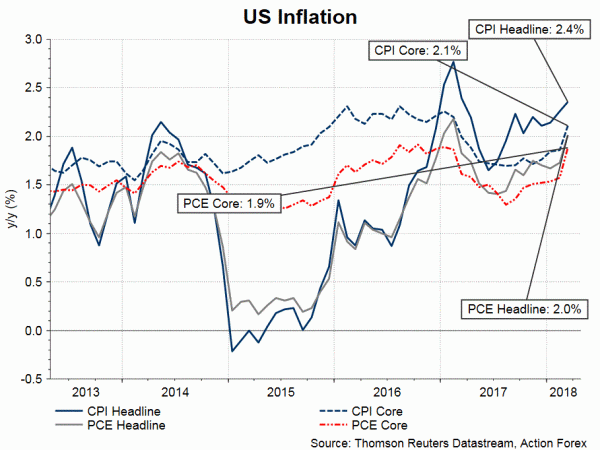
As noted above, the intermeeting dataflow largely allow the Fed to maintain its confidence over the economic outlook. Trade tensions would probably be discussed at the meeting but we do not expect the situation would have any effect on the current outlook. Another topic would be tighter credit conditions. 10-year US Treasury yield breached 3% last week for the first time since December 2013. The 2-year yield have risen 16 bps, while 10-year yield up +5 bps, from the March meeting, as of April 27. This also suggests that the yield curve has reached the flattest level in 6 years. We expect the Fed to discuss the possible consequences in the upcoming, though the details would unlikely be revealed until publication of the minutes.
